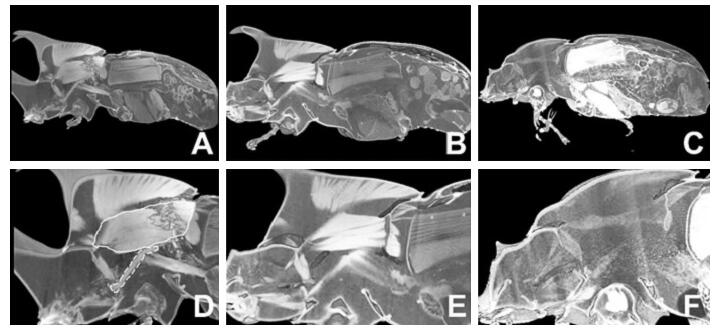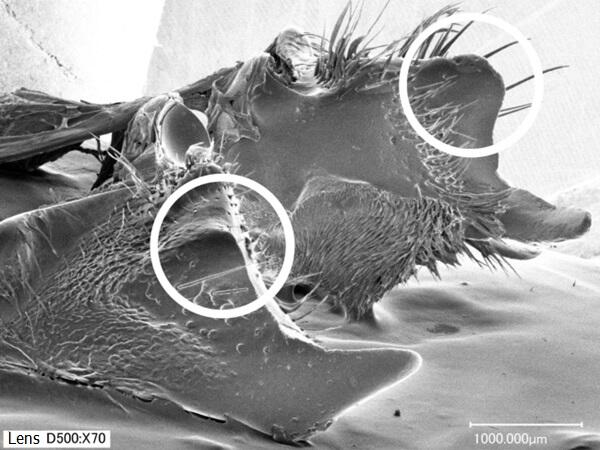Division Head Shuhei Nomura and Senior Curator Tatsuya Ide of the Division of Terrestrial Invertebrates in the Department of Zoology at the National Museum of Nature and Science have revealed asymmetrical characteristics in a gynandromorph (an individual with both male and female traits) Japanese rhinoceros beetle donated in 2018. Using micro-CT (microfocus X-ray-computed tomography) and SEM (a scanning electron microscope), they discovered that while the head shows female characteristics, the thorax and abdomen display male features. Even within the head, the mandibles display asymmetry—the right mandible has male characteristics while the left has female characteristics. Although these beetles are referred to as gynandromorphs, the distribution of male and female traits varies significantly between individuals. Therefore, accumulating and comparing morphological observation data from more gynandromorph specimens is essential. Combining these findings with knowledge from developmental biology that deals with genetic information may help understand the mechanisms that create gynandromorphs and provide insights into sex determination mechanisms and the roles of both sexes in nature. The study was published in volume 27, issue 4 of the journal Konchu (New Series).

Provided by the National Museum of Nature and Science
While over 99% of insects are either distinctly male or female throughout their lives, very rarely individuals emerge with characteristics of both sexes, making it impossible to classify them completely as either male or female (gynandromorphs).
In 2018, the National Museum of Nature and Science received a request from a member of the public to identify a rhinoceros beetle "with no horn on its head but with a horn on its thorax." It was identified as a gynandromorph. The specimen was donated while still alive, allowing researchers to record video documentation before preserving it as a wet specimen in ethanol solution. Rhinoceros beetle specimens are typically preserved as dry specimens, making a wet specimen with video documentation of the living beetle extremely rare.
When examining the gynandromorph's wet specimen using micro-CT, researchers found internal structural differences as well. The muscles moving the head were well-developed, similar to those of a normal male. Additionally, the shadow of a heavily ossified male genital organ was visible in the abdomen; dissection confirmed it was identical in shape to that of a normal male.
Further detailed observations of the external surfaces of the gynandromorph, normal male, and normal female specimens were conducted using an SEM. The thoracic dorsal surface and elytral (forewing) dorsal surface microstructures of the gynandromorph showed crepe-like microstructures similar to those of a normal male, without the dense long setae typical of normal females on the elytral dorsal surface.

Provided by the National Museum of Nature and Science
When the left and right mandibles of the gynandromorph were removed and observed with SEM, researchers found that the upper surface of the left mandible had a trapezoidal protuberance covered with broad, large bristles similar to a normal female, while the upper surface of the right mandible had a near-triangular protuberance with almost no hair covering, similar to a normal male. This confirmed that the mandibles displayed different male and female characteristics on each side.
This gynandromorph specimen shows a mixture of male and female characteristics not only between "the head and the rest of the body" but also within the head itself. In contrast, another gynandromorph specimen long preserved at the museum has a large horn on its head like a male but lacks a horn on its thorax, showing characteristics different from those of the current specimen. Gynandromorphs occur with extremely low frequency, making it difficult for researchers alone to obtain specimens for study. In this context, the significant achievements stemming from this specimen provided by a member of the public represent an important milestone and can be considered an excellent example of citizen science.
This article has been translated by JST with permission from The Science News Ltd. (https://sci-news.co.jp/). Unauthorized reproduction of the article and photographs is prohibited.




